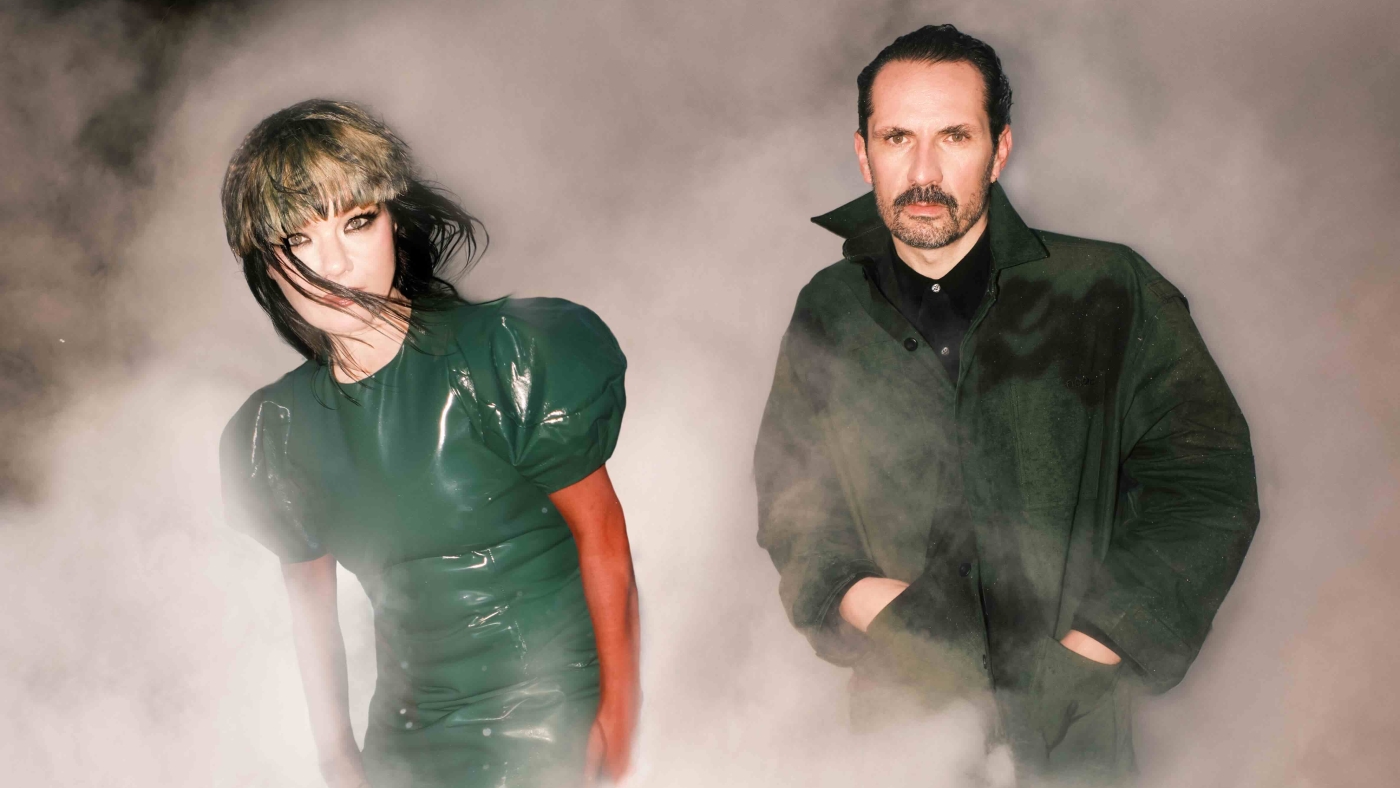Björk’s soundscape, Nature Manifesto, is currently playing for visitors who travel on the escalator at Paris’ Centre Pompidou.
Manuel Braun/Centre Pompidou
hide caption
toggle caption
Manuel Braun/Centre Pompidou
Visitors can hear Björk’s immersive, otherworldly soundscape, Nature Manifesto, over the next few weeks as they climb the long, glass escalator that hugs the side of Centre Pompidou in Paris, France.
Björk is not only an Icelandic pop star, but also an avant-garde artist and climate activist. Her new sound installation blends the noises of endangered and extinct animals with her own voice, reading text she co-wrote alongside editor and photographer Aleph Molinari.
“It is an emergency. The apocalypse has already happened. And how we will act now is essential,” Björk recites over an array of ear-tingling wildlife noises that are sometimes natural, sometimes otherworldly. “In a pioneering sound strata of mutant peacocks, bees, and lemurs, biology will reassemble in new ways.”
A journey through different sonic worlds
Created with IRCAM (Institut de Recherche et Coordination Acoustique/Musique), a preeminent music and sound research institute based in Paris, the installation employs field recordings of animal sounds. Some of these were manipulated using artificial intelligence.
“As you go up the escalator, you go through all these different sonic worlds,” said IRCAM sound artist Robin Meier Wiratunga, who collaborated with Björk on the installation. “We have orangutans, mosquitoes, beluga whales, and then when you reach the top floor, the climactic musical event, which we lovingly call the ‘Dolphin Disco.'”
Some creatures whose vocalizations appear in Nature Manifesto, such as the Hawaiian crow, cannot be heard in the wild anymore. The creative team grabbed this bird’s call from an archive of extinct animals.
“This immersive sound piece gives endangered and extinct animals a voice by merging their sounds with our words, handing them the microphone,” Björk said in a statement shared with NPR. “We wanted to share their presence in an architecture representing the industrial age, far away from nature. We wanted to remind citizens of the raw vitality of endangered creatures.”
Capturing the sounds of lost species
We don’t know for sure what sounds many extinct animals made. University of Texas paleontologist Julia Clarke, who studies the sounds of extinct animals, said we can glean clues by studying sound-making in living species and the preserved soft tissues, skeletons and fossils of extinct ones.
“We might look at the sound-producing structures, like vibratory vocal cords,” Clarke said. “We might look at the structures that are rubbed together or banged together.”
Up to one million plant and animal species are facing extinction due to human activity including climate change, pollution and habitat loss, according to a 2019 global report on biodiversity.
“What we’ve noticed in mass extinction is really the absence of sound,” Clarke said.
But she added that Nature Manifesto isn’t only highlighting this catastrophic loss. It also suggests if we stop destroying the planet, that species might continue to evolve.
“It’s challenging us to think about in visceral ways what a very different and very acoustically diverse future might sound like,” she said. “I hope it is that acoustically diverse.”

Björk and Aleph Molinari collaborated on Nature Manifesto at Centre Pompidou in Paris.
Vidar Logi
hide caption
toggle caption
Vidar Logi
Björk the climate activist
Björk’s passion for environmental stewardship runs deep. Some of her albums touch upon the natural world and its complex relationship to technology, such as Biophilia (2011) and Fossora (2022). She also advocates strongly for ecological causes, including her ongoing fight against intensive fish farming in her native Iceland. A recently discovered butterfly species — Pterourus bjorkae — was recently named in her honor.
The singer, visual artist and activist Anohni, who is exhibiting a companion video piece alongside Nature Manifesto at Centre Pompidou, said she and Björk often talk about climate issues.
“We’ve spoken a lot about environment over the years, just as artists between each other, trying to understand our right-size relationship to this unfolding crisis and the different ways that we might utilize our agency as artists,” she said. “She’s always been such a profound and moving optimist.”
Jennifer Vanasco edited the broadcast and digital versions of this story. Chloee Weiner mixed the audio.



